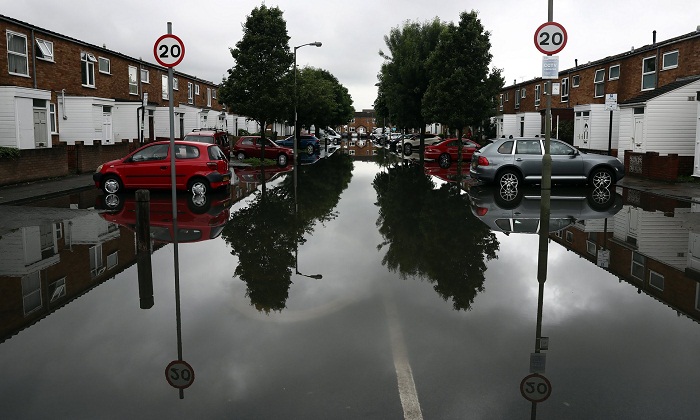Latest UK flood plans fail to address growing risk of flash floods

Flash flooding, which struck a swathe of southern and eastern England on Friday, is a greater threat to homes, roads and railways than river or coastal flooding. Yet it was completely excluded from the government’s National Flood Resilience Review, published last week. Worse, the risk of flash flooding is rising, as climate change leads to more intense, more frequent rainstorms: the Met Office has shown that extremely wet days have become more common. On Friday, half a month’s rain was dumped in one day. The problem is the overloading of Britain’s antiquated drainage and sewer networks, compounded by the continued concreting over of land for development. The surface water can neither be absorbed or quickly drained away, leading to flash floods. Ministers cannot say they were not warned. Flash flooding was the principal cause of the most damaging floods in UK history, which in 2007 caused over £3bn of damage, caused 13 deaths and was classified by the Environment Agency (EA) as a “national disaster”. In 2013, new maps from the EA showed 3m properties were at risk from flash flooding in England, compared to 2m from river and coastal flooding. Most insurance claims made each year for flood damage are because of flash floods and there are at least 20,000 sewer overflows a year in the UK. Risks to transport have also been identified: Network Rail is monitoring 200 “high risk” earthworks – embankments and cuttings vulnerable to washing away. In April the Guardian revealed that 57 tube stations are at high risk of flash flooding, including Manor House which flooded on Friday. The London Underground report said it was “only a matter of time” before serious flooding strikes. After the 2007 disaster, the Pitt review led to new laws in 2010 to implement the use of sustainable drainage systems, which provide safe areas for water to pond. But the provisions were never implemented and instead a voluntary system asking developers to follow these practices was put in place.

